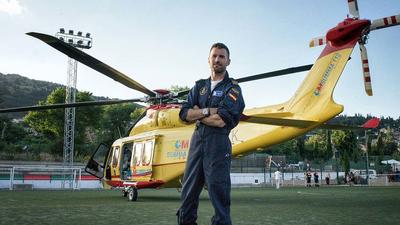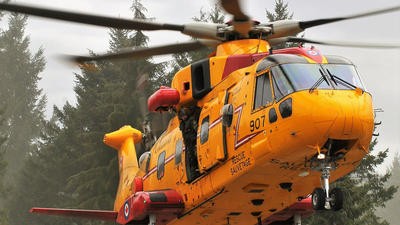Aerial firefighting technology and tactics

Aerial firefighting can take many forms – from surveillance drones, to huge water bomber jets and light utility helicopters equipped with buckets. Mario Pierobon takes an in-depth look at what resources are needed to co-ordinate an enhanced response to aerial firefighting challenges around the world
The fires that developed in late August 2019 in the Amazon rainforest were a very large-scale damaging event that placed a global spotlight on the strategic importance of aerial firefighting. The response to the Amazon wildfires led to international co-operation, with aircraft being sourced from many different parts of the world to combat the fires, and their procurement was even partially backed by G7 nations’ funds. In this feature, we have reached out to industry experts to reflect on the considerations needed to ensure better preparedness in the wake of possible extreme wildfire events across huge areas – similar to those occurring across the north western US right now.
Aerial firefighting resources come in many shapes, sizes, and capabilities. Canada-based Conair, for example, has a fleet of over 70 fixed-wing aircraft, each one fitting into a specific part of a wildfire control agency’s fire management plan. “The majority of our aircraft are secured via long-term exclusive-use contracts for a specific number of days each year corresponding to the anticipated need of the particular agency. The first step in developing an aerial firefighting service is understanding the needs of the agency and the conditions in the area of concern,” said Jeff Berry, Director of Business Development at Conair. “Factors to consider include the size of the airport ramp and the length of the runway, location and services available, water sources in proximity to the area of concern and their size, what time of year the fires occur, the land status and burn permitting system, detection ground firefighting resources, the use of suppressants or retardants, and the cost-benefit of fighting the fires.”
Berry highlights that it would be difficult for any company to guarantee aerial firefighting resource availability for future events on a ‘call-when-needed’ basis. “Availability of aerial assets, in the absence of a long-term commitment, is based solely on the need and contract commitments in their traditional markets. This is the rationale for the fire management plan and the role of long-term contract relationships; to guarantee the right resources are available, in the right location, when needed by the agency concerned,” he said.
Any long-term fire management strategy must plan for operational readiness, said Jeanette Eaton, Sikorsky Vice-President of North American Sales, who believes that it is never too early to invest in aerial firefighting assets. “A new Firehawk helicopter requires an 18 to 24-month delivery lead time from the date of order. Also, pilot and maintainer training should be factored in. Depending on the level of training each department requests, Firehawk operators have the option to attend simulator training and can follow up with hands-on aircraft training for both pilots and mechanics. With each delivery, operators receive hands-on familiarisation of the water tank and other unique systems installed by United Rotorcraft,” she said.

Careful resource planning is accompanied by the development of specific firefighting technology. On the rotor-wing side of the aerial firefighting business, Sikorsky is responding to the call for modern aerial firefighting assets with the S-70i Firehawk, a third-generation Black Hawk helicopter equipped with a newly designed water tank system. Sikorsky (based in Connecticut) works with Firehawk systems integrator United Rotorcraft (Colorado). The water tank system consists of a 1,000-gallon (3,785 liter) water tank that attaches to the belly of the aircraft, an extended landing gear to accommodate the tank, a retractable snorkel that can refill the tank in 45 seconds, and a rescue hoist.
According to Eaton, California fire departments want the robustness and reliability of a military-designed helicopter to attack wildland fires. “This is because repeatedly acquiring, carrying, and dropping four tons of water onto a fire – dozens of times throughout the course of a day – places huge stresses on the Firehawk airframe. A military design can accommodate these high payloads without injury. Fighting fires from a helicopter is much like bringing troops into a war zone, and then assisting them from the air,” she said. “The Firehawk helicopter inserts 11 to 12 firefighters equipped with chainsaws and other hand tools at the edge of the fire line, or where needed, to cut and smother the burning brush. While this ground operation is underway, the Firehawk helicopter will fly to the nearest water source – whether a swimming pool, a lake or river, or a portable tank placed nearby by the fire department. The aircraft then returns at high speed – usually 125 knots – to the fire.”
Israel’s Elbit Systems observes that, traditionally, aerial firefighting has been carried out using liquid cascade drop methods that require sorties to be conducted at an altitude of 100 to 120 ft in order to reduce liquid loss caused by the aerosol effect. “Such low-altitude flights are restricted to daytime due to safety concerns and civil aviation regulations. The experience from around the globe clearly shows that restricting aerial firefighting to daytime severely degrades its operational contribution,” said Elbit Systems. “Addressing this need, and in hopes of assisting in future similar events, we developed the Hydrop system, which enables a high-precision computed launch of biodegradable liquid pellets from 500 to 2,000 ft altitudes that are safe and certified for night flight. Using the Hydrop system, each aircraft (fixed or rotary) launches tons of liquid pellets (140/250 grams each) in a computed ballistic trajectory, achieving a precise hit with saturation of one to two litres per 1m2.”
we developed the Hydrop system, which enables a high-precision computed launch of biodegradable liquid pellets from 500 to 2,000 ft altitudes that are safe and certified for night flight
The Hydrop solution can be integrated onboard existing firefighting aircraft or future / adapted aircraft for aerial firefighting missions. “In January 2020, we completed a successful field demonstration of our Hydrop system, as part of an exercise led by the Israel Fire and Rescue Authority. During the exercise, two Air Tractor aircraft from the Israeli Aerial Fire Fighting Unit were directed to extinguish a burning field, from as high as 500 ft, more than four-times higher than the average altitude of a standard aerial firefighting sortie,” said Elbit Systems. “Following this demonstration, we have been approached by various potential customers – both authorities and aerial firefighting operators, who expressed their interest in our Hydrop solution.”
In addition to technological solutions, training is also critical for pilots, ground firefighters and area commanders in the perspective of ensuring preparedness. According to Berry, the topics that should be emphasised in training are the role of the aerial resources and details as to the firefighting chemicals that are being dropped – including how they work and what their environmental footprint and role are. “All players need to understand the communications plan and use it to ensure aerial firefighting actions are conducted safely and efficiently. We are investing in enhanced distributed simulation to ensure our pilots are equipped to perform their role safely in the face of escalating fire behaviour,” he said.

According to Eaton, it is important to educate politicians and legislators on the types of aerial firefighting technology that are available, and the need to attack a fire in its initial stage before it has a chance to spread. “Night fighting operations is one example. Winds that drive a fire typically die down at night, when humidity climbs. Night operation using night vision goggles is often how aerial firefighting crews can gain an edge on the fire. Of course, training for nighttime firefighting is paramount. But, with the right combination of technology and training, helicopter crews can be highly effective at night,” she said.
with the right combination of technology and training, helicopter crews can be highly effective at night
Indeed, continuous improvement is critical to ongoing aerial firefighting efforts. “The use of enhanced visibility systems like Max Vis, Synthetic vision, Temperature Rh gauges, Traffic Collision Alert Devices or Traffic Collision Avoidance Systems, additional communications, automated flight following, high flow rate retardant delivery systems are all being explored or recently developed and in some cases have become part of an agency’s standard conditions within a contract,” said Berry.
With helicopter, fixed-wing and heavy-lift configurations, Elbit Systems’ Hydrop integrates fighter aircraft avionics, including a ballistic computer, command and control (C2) system and advanced display systems, together with liquid pellets stored in a specially designed airborne dispenser. “The C2 unit navigates the aircraft to the drop point while the ballistic computer produces an accurate launch trajectory, taking into account aircraft velocity, altitude, GPS location, wind conditions and the weight and shape of the liquid pellets. In addition to lifting the restriction on nighttime aerial firefighting, this high-altitude system improves pilot safety and increases the effectiveness of aerial firefighting, during day and night, by eliminating the liquid loss caused by the aerosol effect,” said Elbit Systems.
Sikorsky is inducting all current and future S-70 Firehawk helicopters into its Trumbull, Connecticut-based Customer Care Centre, where an interdisciplinary team analyses and predicts fleet health, provides engineering support, and expedites spare parts. “Data downloaded from each Firehawk aircraft’s health and usage monitoring system computer will allow us to analyse and forecast how Firehawk helicopters will perform in their high-payload roles carrying firefighters and dropping water,” said Eaton.
Unlike older model Black Hawk helicopters, S-70i Firehawk aircraft are equipped with active vibration control
Unlike older model Black Hawk helicopters, S-70i Firehawk aircraft are equipped with active vibration control. “The system reduces fatigue on the aircraft as well as the pilots, whose workload is also decreased by virtue of the autopilot. Active vibration control prolongs the life of the aircraft and the avionics,” she added.
Sikorsky is also investing in autonomy to address safe nighttime firefighting operations. “The combination of sensors, such as LIDAR, and other camera systems and algorithms, will allow the aircraft to detect obstacles the human eye cannot detect and provide a recommended safe passage that the pilot can accept or reject,” said Eaton. “Our goal is to dramatically reduce instances of controlled flight into terrain (CFIT), which is a leading cause of helicopter accidents. I believe autonomy technology will bring a whole new level of safety to firefighting, especially at night. We are very excited for the future of this technology.”

In the end, aerial firefighting is most effective when the operators develop a partnership with the contracting agency in order to understand their needs and to make recommendations as to how the firefighting assets can be deployed more safely and effectively. “The integration of aerial firefighting assets can and do have a major impact on firefighting success; it must always be understood that aircraft do not put out fires alone; effective wildland firefighting starts on the ground with fast detection, fast co-ordinated initial attack on the ground and in the air as determined by a set fire management plan,” concluded Berry.

October 2020
Issue
In this issue:
- Avionics modernization
- Firefighting technology updates
- IIMC – top tips for avoidance
- Interview: Manolo Guillen, CopterSafety
- Profile: AirCARE1
Mario Pierobon
Mario Pierobon is a safety management consultant and content producer. He writes extensively about aviation safety and has in-depth knowledge of the European aviation safety regulations on both fixed and rotary wing operations. His rotary wing expertise is concerned primarily with specialised operations and the operations requiring specific approval, such as HEMS, hoist operations and performance-based navigation.





